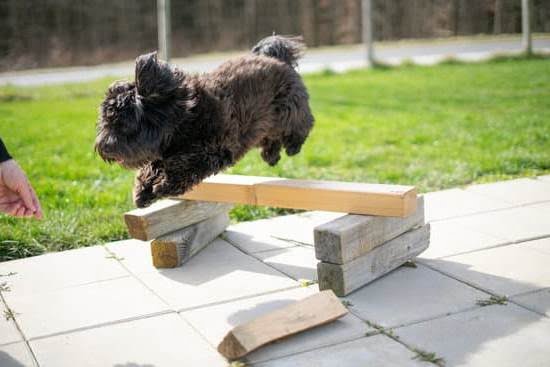Introduction
When it comes to training dogs, the age-old question remains: are female or male dogs easier to train? This is a difficult question to answer; as every dog is an individual, with unique needs and personalities. However, there are some broad observations that can be made about the comparative trainability of male and female dogs based on general tendencies. Generally speaking, female dogs tend to have more honed social skills and can have an easier time following commands than their male counterparts. They also respond better when being corrected for unwanted behavior. Additionally, female dogs may form a stronger attachment to their owners and be more eager to please them. On the other hand, male dogs may often be quicker to learn new physical exercises but may require more consistent corrections when they make mistakes in order to understand what behavior is expected of them. Ultimately, a great deal of how trainable either sex of dog is depends on its individual temperament and how it has been raised and trained by its owners up until the point in question.
Key Distinctions
When it comes to training, there are a few key distinctions between male and female dogs that can influence which one is easier to train. Male dogs tend to be physically larger, usually ranging from 20-25 inches in height (shoulder blade level) and 40-90 pounds in weight. As a result, they often require more forceful and firm handling when being trained because of their strength. Female dogs tend to be slightly smaller than males and possess a more malleable attitude towards training since their level of obedience can typically be increased more quickly with positive reinforcement.
Physical size isn’t the only factor that affects trainability. Hormonal cycles found in female dogs during certain times of the year can cause mood swings that make teaching new commands difficult — while male dogs may become more unpredictable during mating season due to their strong instinctive desire for dominance over other animals.
Overall, both males and females have their own benefits and drawbacks when it comes to training. Experienced dog trainers recommend neutering or spaying male and female dogs before they reach maturity so they don’t have those natural instinctual desires affecting the process of learning how to obey commands from an early age. That being said, patience is key — regardless of gender — when it comes to training your dog.
Training Techniques
For male dogs, the use of positive reinforcement training methods is typically the most effective. Reward-based techniques should be used frequently to reward good behavior and reinforce desired behaviors. A set of commands that are consistently used when teaching lessons can help ensure your dog is responding correctly to each lesson taught.
For female dogs, it’s important to focus training sessions on practical skills such as responsive patience and eye contact; using a calm space, with structure present and praise throughout can prove successful in making further progress with your young pup’s learning journey. Additionally, activities such as clicker training, scent work and agility courses can also be beneficial in teaching basic obedience and behavioral cues.
Making the Most of Training Sessions
Male and female dogs can both learn quickly with the right training. While there are some slight differences in their behaviors and learning, each gender is capable of responding well to instruction and forming positive associations with commands. When it comes to training either a male or female dog, it’s important to tailor instruction specific to the individual animal. This helps create a comfortable environment where learning can occur.
For males, positive reinforcement tends to work a bit better than other forms of correction such as scolding or spanking; they respond best when praised and rewarded upon successful completion of tasks. Additionally, providing variety during training sessions can help keep their attention and prevent boredom. Playing games like follow-the-leader or hide-and-seek can be great for reinforcing learned skills, while also providing fun for the pup.
Females are often more motivated by treats than males and tend to learn slightly faster with incentives. Additionally, females may be more sensitive to corrections – harsh words or tones should not be used when teaching them new things as this can lead to fear and nervousness in the future. It’s important that you build your dog’s confidence, reinforce good behavior with treats or lovingly worded praise so she knows when she’s doing something correctly – consistency is key! Setting expectations clearly (with signs or verbal commands) will also ensure your pooch knows exactly what you want of her once those expectations have been set in place.
Overall, there isn’t one set way of training either sex of canine; males and females are both capable of learning just as any other pet would under proper instruction – it’s just a matter of finding out what works best for your particular pup!
Considerations of Individual Personality
When it comes to training a dog, owners should take their individual pup’s personality and needs into account. Different dog breeds may have different requirements when it comes to obedience training, while some pups may be easier to train than others. This can be true of both male and female dogs. For example, some females may be more dominant than males or vice versa, requiring different strategies when it comes to the commands and rewards used during training sessions. Additionally, larger or active breeds may need more exercise than smaller or calmer breeds in order to learn effectively. Owners should research their specific breed’s tendencies and then work with qualified trainers if needed to ensure that they are utilizing the best methods for their pet. This allows them to create personalized schedules and activities that are catered towards the particular needs of their pup. Furthermore, as each dog is an individual, owners should pay attention for cues from their pups about which methods are working and which ones seem ineffective so that they can adjust accordingly. With patience and understanding from the owner, any canine will be able to learn new skills without becoming frustrated or anxious.
Common Questions & Answers
Q: Does gender make a difference in the ability to train a dog?
A: Contrary to popular belief, there is no general consensus that one gender—male or female—is easier to train than the other. Generally speaking, individual dogs have unique personalities, instincts, and energy levels that can factor more into successful training than gender. However, spayed/neutered animals tend to be less aggressive and easier to handle overall.
Q: Are male dogs more difficult to manage due to higher testosterone levels?
A: Again, generally speaking, there isn’t a lot of scientific data proving that male dogs are more difficult to train because of their higher testosterone levels. Anecdotally, many owners say males can be more stubborn and energetic than females due to their hormone levels, but this tends to vary from animal-to-animal. Proper training techniques should be tailored based on an individual dog’s temperament and needs with consistency as the most important factor for success.
Q: Are female dogs typically better behaved?
A: Female dogs are not automaticalloy better behaved than males but they can often display fewer aggressive behaviors since they reach sexual maturity at an earlier age when they haven’t been spayed or neutered yet. With proper socialization and consistent training methods, male and female dogs alike can become obedient companions.
Conclusion
To conclude, it is difficult to say definitively whether female or male dogs are easier to train. Every pup is unique and will respond differently according to their individual personalities. With that in mind, consistency, patience, and providing positive reinforcement are some of the best ways to train your dog regardless of their gender. If you’re looking for more guidance or tips on how to teach any furry friend the basics, consider consulting professional dog trainers or check out some great online resources such as The American Kennel Club’s Guide to Dog Training.

Welcome to the blog! I am a professional dog trainer and have been working with dogs for many years. In this blog, I will be discussing various topics related to dog training, including tips, tricks, and advice. I hope you find this information helpful and informative. Thanks for reading!





